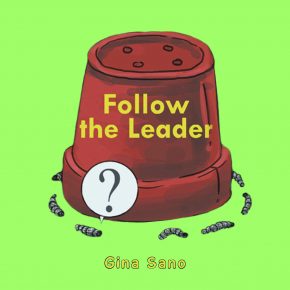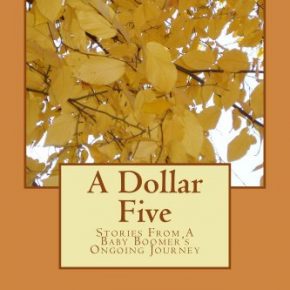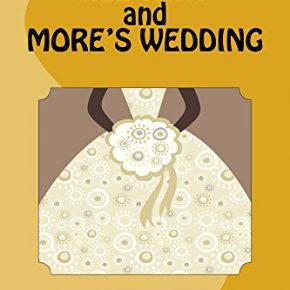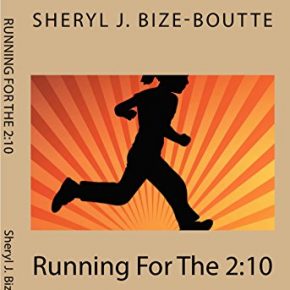The Literary Contest For Nature 2017-2018 is back. It continues to
encourage writers from around the world to create poetry and short
stories to recall the importance of supporting nature as our mother
and cradle of humanity. It is a creative process that seeks to
stimulate new writers, creating a valid opportunity that can create
bridges for their future. This year also offers a small monetary prize
to support the purchase of writing materials.
Do not forget to participate, for more information see:
http://talesforlove.blogs.
Monthly Archives: February 2018
Synchronized Chaos February 2018: Encountering ‘Others’
 This issue, perhaps in a wild burst of curiosity, explores the various ways that we might relate to those who are different, or at least external to us. The concept of the ‘other’ exists within literary theory and sociology and refers to our categorizing something, or someone, as distinct from ourselves.
This issue, perhaps in a wild burst of curiosity, explores the various ways that we might relate to those who are different, or at least external to us. The concept of the ‘other’ exists within literary theory and sociology and refers to our categorizing something, or someone, as distinct from ourselves.
Rus Khomutoff’s work reflects more of an internal focus on one’s own thoughts and feelings, not explicitly considering others. Yet, his work is inspired by fellow poet Ric Cafagna, so his process of creation involves someone else. Joan Beebe also gives us a poem about internal peace, yet it’s expressed outwardly as a wish for her readers.
Christopher Bernard offers up a sixth installment of Amor I Kaos, a novel dramatizing the conflict between internal existential crises and the outward focus on the ‘other’ brought through romantic love.
Arnab Kumar Roy presents a piece from the point of view of a rape victim to speak against the crime and urge his fellow men not to enact such violence on others. This is an example of how imagination can help us to develop compassion for and understanding of others through art.
Dee Allen poetically explores the mysteries of pomegranates, Lauren Ainslie provides a poignant look at an elegant candle, Kaia Hobson observes the minute particles flitting through a beam of sunlight.
J.J. Campbell contributes a set of poems on age, wisdom and maturity that include one piece on visiting African-American dance clubs as a white man. Sheryl Bize-Boutte contributes an (unintentionally) complementary piece about an African-American family going on a cross-country road trip to drop their daughter off at college, where they encounter people who mistreat them or view them as outsiders due to their race. Her protagonists seem a lot less safe than J.J. Campbell’s speaker, who has figured out how to avoid trouble.
Joe Balaz’ poetic protagonists are themselves the ‘others,” as they speak the minority language blend of Hawaiian Pidgin. Yet they are able to stand up for themselves and become quite successful in life’s games of chance.
J.D. DeHart’s poems show us performers, readers and artists who carry out their art regardless of others’ approval, or even whether they have audiences at all.
Jaylan Salah explores different ways female characters have been turned into ‘the other’ in film, whether as frightening monsters, enhanced beings, or simply with a biology that can differ from the assumed default, and whether these portrayals are empowering to women and girls.
Elizabeth Hughes’ Book Periscope covers a set of titles that involve getting out of oneself and observing something else, whether a different place, a person’s past experience, a newly found personal destiny, or a set of caterpillars in one’s yard. These include PW Covington’s Motor Hotels of Central Avenue, Gina Sano’s Follow the Leader, Steven Hunnicutt’s A Bridge With a House…The Covered Bridges of Oregon, Raven Bohannon’s Supernatural Island: Book One, and Sheryl Bize-Boutte’s All That and More’s Wedding, A Dollar Five, and Running for the 2:10: More Stories from a Baby Boomer’s Ongoing Journey.
Ryan Flanagan’s poetry covers real life in all its ordinary grotesqueness: packs of wild dogs, California border towns, bodily functions, hole-in-the-wall delis where the food has to speak for itself.
Vijay Nair, in his short story ‘Wuthering Heights Returns’, also shows a protagonist who learns to see the world outside himself as it actually is when his idealized lover betrays him. To a much greater extent than in the original Emily Bronte novel, the characters’ common language, the everyday setting of the story, and the nature of her betrayal highlight the conflict between romantic fantasy and real life. As in Flanagan’s work, Vijay Nair’s protagonist has to encounter love warts-and-all, rather than simply seeing his impossible youthful passions give way to the inevitable compromises of adulthood.
Sequoia Hack presents another take on romantic tragedy, a wry piece where someone tells their current partner’s ex to get over them and go back to the lackluster, grotesque real world without their lost love.
Chimezie Ihekuna dramatizes the tension between people’s desire to reach the ideals of behavior to which the Christian faith calls them and their tendencies to follow their own natural inclinations, whether individually or as part of a church. Religion here serves as ‘the other,’ an external and communal set of values pulling Ikehuna’s protagonists outside of themselves. In an essay on home-making, Chimezie Ihekuna outlines the complex and critically important work involved in maintaining a home and raising a family, thus arguing for a high and respected status for people who hold that role.
Mahbub finds comfort through his connection to others, knowing that he’s part of a continuous world where others have lived and died, thought and felt, just as he has. Romantic love, whether actual or idealized, a cat who joins him in crying late at night, and just the awareness of the commonality of existence help him to know that he’s not alone.
Michael Robinson, like both Chimezie Ihekuna and Mahbub, turns to faith and to the love of others around him in order to connect to something greater than himself. He celebrates female, maternal love along with certain poetic aspects of being in nature.
Jeongeui also finds comfort in nature, relaxing in landscapes that nourish her poetically and personally, and which she has painted. Along with Joan Beebe, who praises the peace and balance found out of doors, she finds what she needs from life in the wider world of other species.
Both Jeongeui and Joan Beebe make nature an ‘other’ to an extent, since they admire landscapes in an idealized sense rather than authentically describing the intricacies of, say, predation or decomposition the way Ryan Flanagan or Vijay Nair’s speakers might have. Yet, what both artists find in nature is the very real and psychologically restorative effect of getting out of one’s self even somewhat and realizing that the world is much larger than one’s own mind. Joan Beebe also points to our responsibility to respect and care for nature as part of the living world ourselves.
We hope that this month’s issue of Synchronized Chaos will pull you out of yourself and provide that same mental and physical restoration as a walk by the stream or a rest in a meadow of flowers.
Poetry from Mahbub
A Spirit of Cry
My heart was crying last night
Of course a pain was there in that cry
No sleep in my eyes
Suddenly a cat started to cry just outside my room
With the pathos tone of that cry
in that dead of night
I could not manage any how
It started with double beat
I do not know why —-
I lost myself in the wave.
And when I woke up, a light was beaming on my face.
Poetry from Joan Beebe
Essay from Jaylan Salah
The Unsaid/ The Other
Female Monstrosity, Menstruation and Feminine Awakening in Film
The female character has been depicted throughout the history of cinema in the form of various tropes. The “Other” woman, ever since the time of the female vamp has been always a challenge; used in the stark comparison to the good girl image; the doting wife, the female role model and the female archetype of beauty vs. ugliness, madness or evilness. Women have always been depicted in the “Otherly” autre form whether through traditional religious scripture which then transcended to the early forms of art.
The female body has been handled with care for many years either through glorifying its sexuality or playing on its vulnerability. In a teenage flick like “The Breakfast Club” the two female protagonists –the beautiful, pampered Claire and the introverted, outcast Allison– are pitted against each other, with the Claire model significantly winning over Allison’s, when the latter takes after the more “accepted” feminine, Claire-like model to gain the admiration and romantic interest from the handsome athlete Andrew. In a very uncomfortable scene in the eponymous “Carrie – 1976”, menstruation and reaching womanhood are associated with acquiring supernatural powers. Blood is used as a symbol of both empowerment and alienation for our female protagonist. In the scene where a repressed Carrie discovers menstruation for the first time could be seen in parallel with the scene where the bucket of pig blood is thrown from high above down on her as she receives her prom queen title. She is dethroned in the most demeaning, humiliating way, and her initial discomfort with blood is linked to the emergence of her femininity as a sign of bodily maturation.
Poetry from Dee Allen
Chinese Apple
Full, round, organic
Little oddity the colour
of blood
Piques my interest
when others pass it over.
Holding it in one hand —
Firm —
Peeling away its
layered hide with
the other —
Tough —
This unusual gift from
Asia’s orchards has no
flesh, making it
All the more unusual.
Little rubies inside
Eye-catching, enticing
enough to
Taste.
I savor the seedjuice
with each bite,
Carrying the same flavour
Most romances have:
Bittersweet.
— For Jennifer barone.









